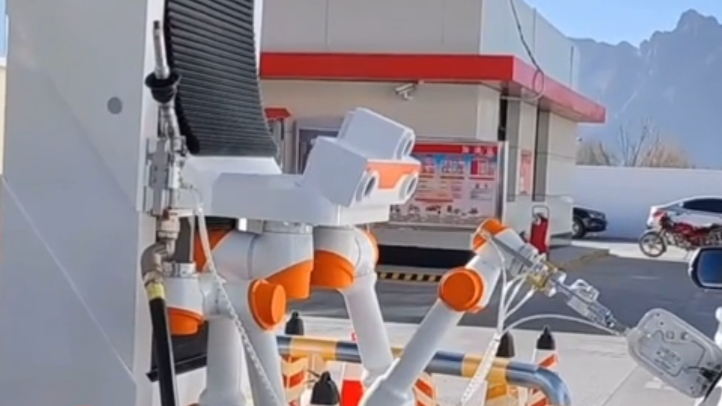Robots are getting stronger muscles and explosion-proofing
Researchers at MIT have developed a new fabrication technique for more efficient 'muscles' in tiny, insect-like flying bots. This comes alongside news surrounding China's introduction of explosion-proof refuelling robots. So it looks like our future overlords are getting some strength upgrades... but on a serious note, let's talk robotic innovation.
MIT has been working on flying insect robots, also known as diminutive drones, for ages. They work, according to the MIT News article, using soft actuators that are "like artificial muscles that rapidly flap the robot’s wings." These soft actuators also give the bots a better chance to withstand and recover from running into obstacles.

The soft actuators they used to fly had always needed "much higher voltages than similarly-sized rigid actuators," the article explains. Essentially they were unable to carry enough charge to work efficiently.
In their next evolution, these agile flying bots have received some Stonefly-reminiscent upgrades, and can now run on "low-voltage, power-dense, high endurance soft actuators." The new fabrication technique means they can now use "75 percent lower voltage than current versions while carrying 80 percent more payload," the article reads.
The bot now weighs less than a gram, and can hover quite stably for 20 seconds—which is actually the longest flight ever recorded by a sub-gram robot.
They're nifty little creatures, for sure, but they come with some major limitations at the moment. One day, they might be used to "pollinate a field of crops, or search for survivors amid the rubble of a collapsed building," but right now there's still work to be done.
The issue faced currently lies in how thin the team can make the actuator layers, due to dust in the air. But soon they'll be building actuators in an MIT.nano clean room, in order to eliminate issues posed by pesky dust particles.

At the other end of the robotic weight-class spectrum, the China National Petroleum Corporation (CNPC) recently rocked up with "the country's first high-altitude outdoor explosion-proof refuelling robot."
The company had already introduced a non-contact refuelling service back in 2020, which lets customers use an app to order fuel so they don't have to speak to an attendant. Another refuelling robot was introduced in October of last year, and this explosion-proof version is just the next step in making the process safer, more efficient, and user-friendly.

Best wireless gaming mouse: ideal cable-free rodents
Best wireless gaming keyboard: no wires, no worries
Best wireless gaming headset: top untethered audio
Just look at his little robot face: What a good bot.
On the reddit post that brought the bot to our attention, one reply to the top comment goes into the projected logistics a little. It claims that, due to the robot's total cost equating to maybe ten years of cheap human labour, "There is 0 chance this makes financial sense."
I'm sure CNPC didn't make the decision to invest heavily in robotics equipment without first consulting a financial advisor, but you never know. What's important to note is that people (in case anyone needs reminding) are not explosion-proof, and tend to demand things like wages and holidays.
Sure, it'll be in need of the odd repair here and there, but it'll probably last longer than ten years—meaning the cost effectiveness for CNPC will only get better in the long run.
Of course, we're hoping always for the advancement of humanity through automation and higher efficiency tech. Let's just hope that, now that it's explosion-proof, it doesn't go i-Robot and turn against us.

Post a Comment